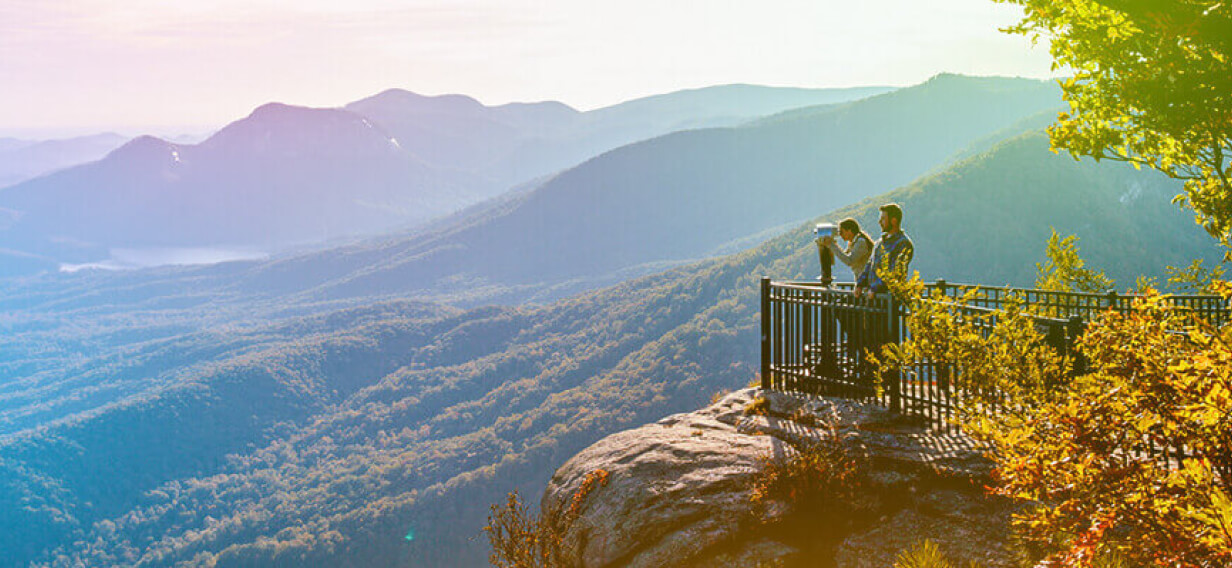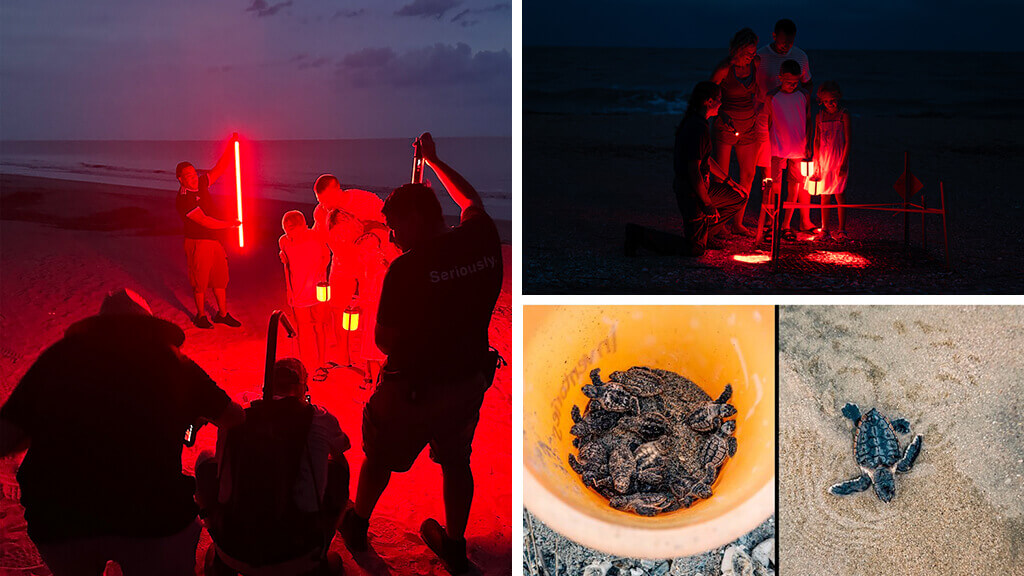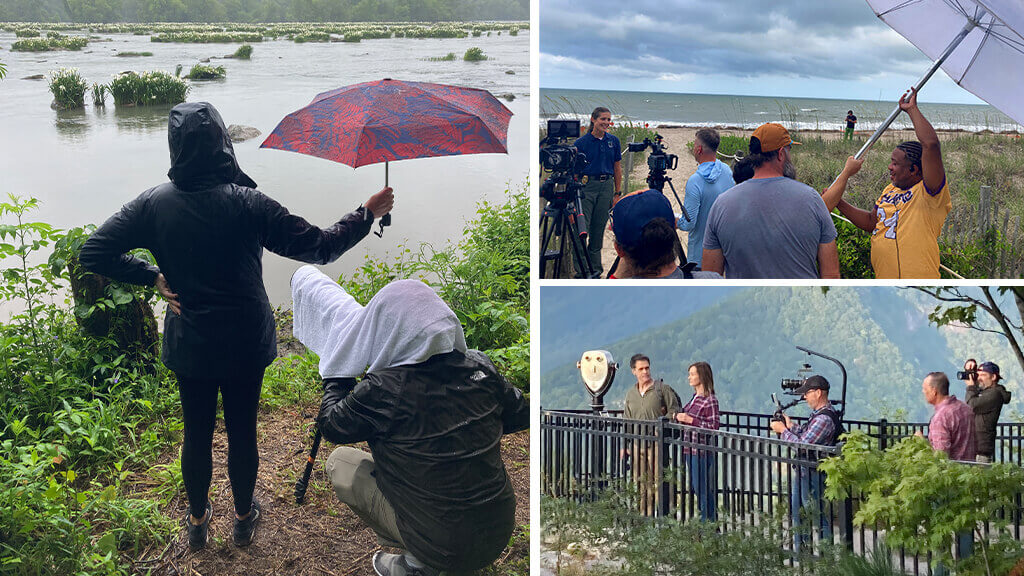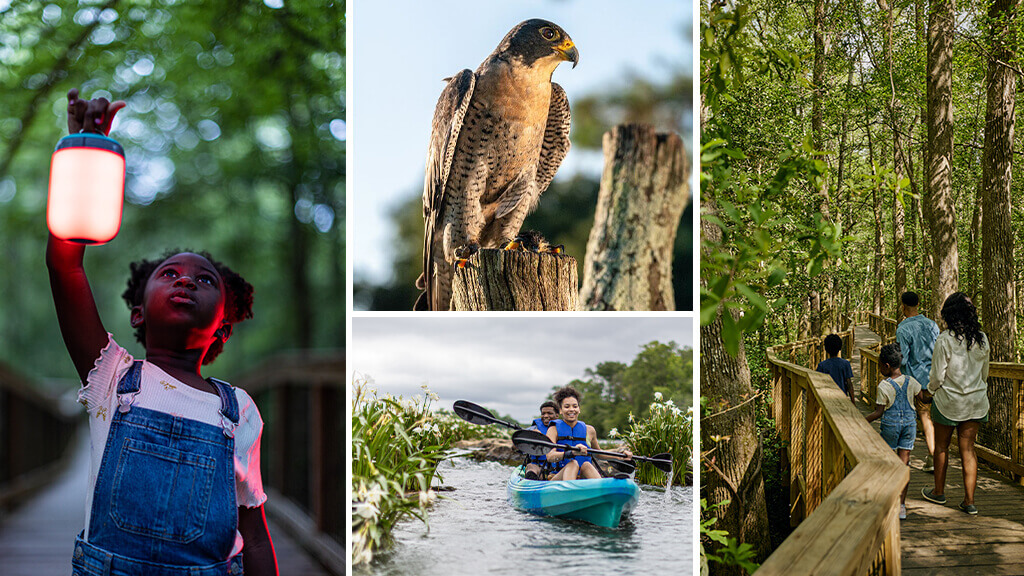
Chasing Nature: The Art of Outdoor Productions in South Carolina
In the fast-paced and dynamic world of travel and tourism marketing, 9Rooftops has established a remarkable decade-long partnership with the South Carolina Department of Parks, Recreation and Tourism (SCPRT). Serving as their marketing and advertising Agency of Record, 9Rooftops crafts campaigns that resonate with and truly captivate audiences.
At the core of the encompassing Discover South Carolina campaign lies a dedication to highlighting the hidden gems within well-explored areas while supporting local tourism partners by showcasing iconic experiences and unique attractions in each of the state’s tourism regions.
Developed in collaboration with SCPRT and the 9Rooftops Creative and Studio teams, our latest campaign—Wild Wonders—highlights four captivating natural phenomena across the state’s diverse landscapes.
Each wild wonder—the synchronous fireflies at Congaree National Park, the rare rocky shoals spider lilies at Landsford Canal State Park, nesting loggerhead sea turtles at Edisto Beach State Park and the breathtaking raptor migration at Caesars Head State Park—occurs for just a brief period each year, underscoring the importance of meticulous preproduction planning to bring these extraordinary events to life.
Planning and Preparation: Setting the Stage
“One of the beautiful things about our job is scouting,” says 9Rooftops Producer Caitlin Wallace. “Here’s this cool, half-mile hike that could be good to show in the video, so we have to do the hike to make sure it’s worth our while to shoot. That’s a bit of a perk—I get to hike in beautiful places and see Mother Nature in all her glory.”
While the locations for the fireflies, spider lilies and raptor migration were determined by nature, planning for the loggerhead sea turtles posed more of a challenge due to their nesting in numerous spots along South Carolina’s 187 miles of coastline.
“When you’re trying to catch turtles in the wild, you’re hoping you find them the night you’re there,” Wallace says. “We considered places like Myrtle Beach and Hilton Head, which makes the most sense since most of the crew is here. I spoke with Michelle Pate, the head of the SC Marine Turtle Conservation Program (MTCP), about which beaches would make the most sense. She recommended Edisto Beach State Park because it only has a 1.2-mile footprint to cover, compared to Hilton Head’s 12 miles. They saw 350 nests last year, so it’s a high-density area. There’s also an on-site turtle program that does night walks for the public.”
Because loggerhead sea turtles are a protected species, Wallace had to submit a plan to the Department of Natural Resources explaining the project and how the turtles would be showcased. The entire crew was also required to take a class to learn how to approach the turtles and the rules of what they could and couldn’t do.
“No white lights were allowed because it would disturb the turtles,” Wallace explains. “We had to shoot in night mode or use red lights. It was the hardest shoot of the four, but seeing a mother turtle laying eggs was incredible. I had tears in my eyes; it felt like watching a real-life National Geographic video. Not many people get to experience that.”

Fine-Tuning the Details
Wallace had to consider many other things, including having facilities nearby, access to shade and access to safety structures in case of inclement weather.
“It all comes down to preproduction and being as prepared as possible. You need to understand what you’re getting yourself into,” says Wallace. “Each natural wonder has a set window of time and different geological challenges, so I did a lot of research and spoke with on-site experts. Being organized is really important.”
Wallace also emphasized the importance of detailed scheduling and logistics.
“We map out the entire schedule leading up to the shoot,” she explains, “with milestones for talent selections and other logistics. Then, there is a schedule for the shoot, which organizes how we will shoot the shots. If we’re doing a sunrise shot, we have to get there at 5 a.m. We also have to look at the patterns of light throughout the day. We try not to shoot when the sun is the highest because it’s the harshest lighting. So, we tend to shoot morning and evening when the light is softer.”
Each location required specific equipment to tackle the varying weather conditions and geographical challenges. “Having the right gear for each situation is crucial,” stresses Senior Creative Director Kevin Nightingale. “We had to kayak for the best views of the spider lilies, so the cameras needed water housing. And we had to test it. Testing stuff in advance is important. You never want to be unprepared in the moment.”

Embracing the Unpredictable
Before Wallace’s research could begin, Nightingale and Creative Copy Director Elliott Allen had to put the story together.
“We’re trying to show a depth and variety of possibilities that most people aren’t even aware exist in South Carolina,” explains Nightingale. “We built a loose story based on cursory internet research, looking at the site of each natural wonder and asking ourselves, is this family-friendly? Is this a more high-octane adventure? Or maybe it’s a couple’s retreat? Once we get to scout, we’re more dialed in on the story.”
While the logistics of each shoot required extensive planning, so did the assets that would be created.
“We’re stepping through a shot list, looking at blocking, lighting and time of day. We plan where the talent will walk for each shot,” Nightingale explains. “We need vertical and horizontal shots. We need headspace for headlines and content outside the subject matter that we can duplicate or stretch for those extreme banner requirements.”
These carefully crafted visuals aren’t just for show. As a fully integrated campaign, once assets are finalized, they are used in various paid media strategies, including print, digital, social media and web, all driving traffic to a dedicated landing page on the Discover South Carolina website.
Even with all the planning, Nightingale emphasized the importance of capturing these authentic moments. “We try not to script too much because we want the real, authentic experience to shine through. Everything becomes a little plastic when people are reading lines.”
However, there are some things you can’t plan for, and being able to pivot in the moment is crucial for outdoor shoots.
“For the fireflies shoot, we had a beautiful spot on the boardwalk in Congaree through the cypress swamp area. We were very prepared. I had a storyboard and sketches. The day of, we took a bunch of fantastic photos and were planning how we would shoot it when it got a little darker,” explains Nightingale. “We had a window of about 45 minutes for the perfect light, but right when we were ready to go, the park ranger informed us about wild boar in the area, and they were closing off the boardwalk. Just like that, we had to come up with a completely new plan and make the most of the situation.”

A Collaborative Process
From storyboarding to scouting to the final photo selects and editing, outdoor content shoots demand a diverse range of skills and collaboration to transform a concept from the drawing board to the finished product.
“Everyone on set has a role to play,” explains Wallace. “The PA is just as important as the DP, just as important as the producer. It may sound cliché, but it really does take a team to pull these projects off. Being organized and over-communicating is essential. If everyone understands the context and importance of their roles, the process runs more smoothly.”
This spirit of collaboration extends beyond mere roles; it profoundly impacts the creative process.
“Ideas come from everyone, everywhere. Even with a plan, there are things I focus on, and I don’t see everything, so ideas are always welcome,” explained Nightingale. “My biggest hope is to appreciate the artists and art in the work they’re trying to achieve. I want them to be personally invested, and you’re only going to get that by allowing them to have a hand in authorship and be excited about what we’re trying to make.”
While long days of 12 to 14 hours are typical on set, the camaraderie and shared passion for the work make it worthwhile, especially when faced with unpredictable weather and last-minute changes.
“While certain aspects of outdoor shoots are certainly stressful, we get to be in these beautiful environments as part of our craft,” says Wallace. “I’ve had experiences I wouldn’t have been able to have otherwise. We’re fortunate to do some cool things and explore beautiful places as part of our job.”
This is not an advertisement, and solely reflects the views and opinions of the author. This website and its commentaries are not designed to provide legal or other advice and you should not take, or refrain from taking, action based on its content. Additionally, unless otherwise stated, neither 9Rooftops nor the author is involved in, or responsible for, the marketing or promotional efforts of the individuals or entities discussed.

